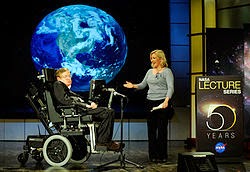Born -May 22, 1954
Nationality- Japanese- American
Field- Engineering
Current Occupation- Professor at the Materials Department
of the College of Engineering, University of California, Santa Barbara.
Major Achievements
- Regarded as the inventor of the blue LED, a major breakthrough in lighting technology.
- Together with Isamu Akasaki and Hiroshi Amano, he was one of the three recipients of the 2014 Nobel Prize for Physics "for the invention of efficient blue light-emitting diodes, which has enabled bright and energy-saving white light sources".
- Nakamura is a professor of Materials at the University of California, Santa Barbara, and holds over 100 patents.
- In 2008, Nakamura, along with fellow UCSB professors Dr. Steven DenBaars and Dr. James Speck, founded Soraa, a developer of solid-state lighting technology built on pure gallium nitride substrates.
Recognitions
·
2001 awarded Asahi Prize from the Japanese Newspaper, Asahi Shimbun
·
2002 awarded the Benjamin Franklin Medal in Physics from the Franklin
Institute.
·
2006 awarded Finland's Millennium Technology Prize for his continuing
efforts to make cheaper and more efficient light sources.
·
2007 nominee for the European Inventor Award awarded by the European
Patent Office
·
2008 won the Prince of Asturias Award for Technical and Scientific
Research.
·
2008 awarded an honorary degree of Doctor of Engineering from Hong Kong
University of Science and Technology.
·
2009 received the Harvey Prize from the Technion in Israel.
·
2012 named Silicon Valley Intellectual Property Law Association (SVIPLA)
Inventor of the Year.
·
2014 received the Nobel Prize in Physics together with Prof. Isamu
Akasaki and Prof. Hiroshi Amano for inventing blue light-emitting diodes
Education
Nakamura graduated from the University of Tokushima in 1977 with a B.Eng. degree in electronic engineering, and obtained an M.Eng. degree in the same subject two years later.
Career
He started his
career with Nichia Corporation, also based in Tokushima ( Japan). It was while
working for Nichia that Nakamura invented the first high brightness gallium
nitride (GaN) LED whose brilliant blue light, when partially converted to
yellow by a phosphor coating, is the key to white LED lighting, which went into
production in 1993. He left Nichia Corp in 1999 and joined College of Engineering, University of
California, Santa Barbara.
Background of blue LED Invention
Previously, J. I. Pankove and co-workers at RCA put in considerable effort, but did not manage to make a marketable GaN LED in the 1960s. The principal problem was the difficulty of making strongly p-type GaN. Nakamura drew on the work of another Japanese group led by Professor Isamu Akasaki, who published their method to make strongly p-type GaN by electron-beam irradiation of magnesium-doped GaN. However, this method was not suitable for mass production and its physics was not well understood. Nakamura managed to develop a thermal annealing method which was much more suitable for mass production. In addition, he and his co-workers worked out the physics and pointed out the culprit was hydrogen, which passivated acceptors in GaN.
At the time, many considered creating a GaN LED too difficult to produce, therefore Nakamura was fortunate that the founder of Nichia, Nobuo Ogawa (1912–2002) was initially willing to support his GaN project. However the company eventually ordered him to suspend work on GaN, claiming it was consuming too much time and money. Nakamura continued to develop the blue LED on his own and in 1993 succeeded in making the device.
Dispute with Nichia Corp
Nakamura developed the blue light-emitting diode while employed as an engineer for Nichia. He filed a lawsuit in 2001 seeking monetary compensation and recognition that the patent for the semiconductor device belongs to him.
According
to Nakamura, Nichia has filed about 80 patents related the development of the
blue LED. He claimed to have developed the blue LED on his own after the company
ordered him to suspend work on the time-consuming project. In 1993, he
succeeded in making the device, which benefited the company enormously,
generating at least 2 billion yen. Nakamura, who left Nichia in 1999, said the
firm unfairly denied him profits from his own invention.
The
development of the blue LED, which is widely used in electric screens, received
worldwide attention because it was vital for developing a laser for
high-capacity DVDs.
Although Nakamura originally won an appeal for ¥20
billion (≈US$180 million), Nichia appealed the award and the parties settled in
2005 for ¥840 million (≈US$9 million), at the time the largest bonus ever paid
by a Japanese company.






